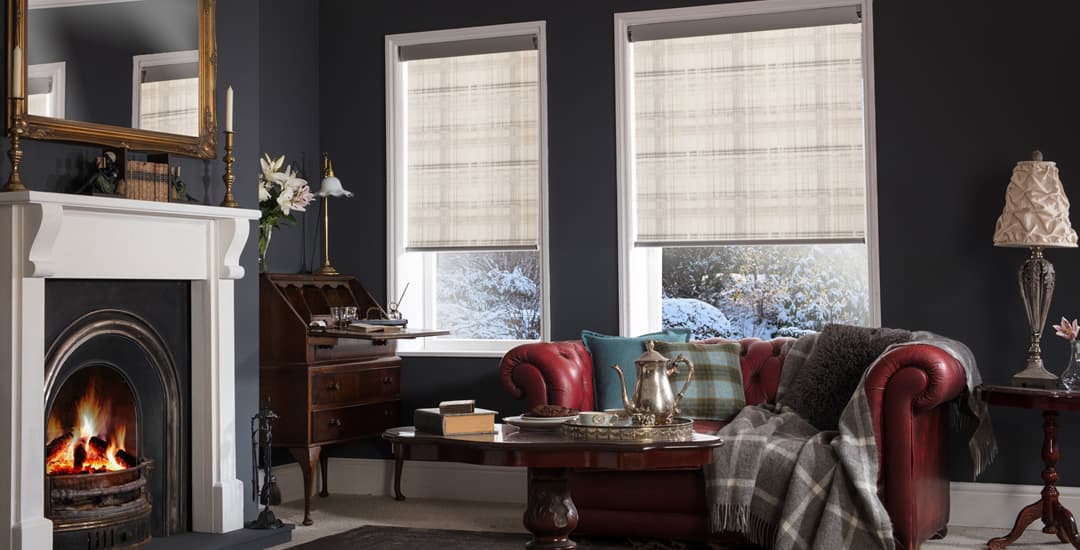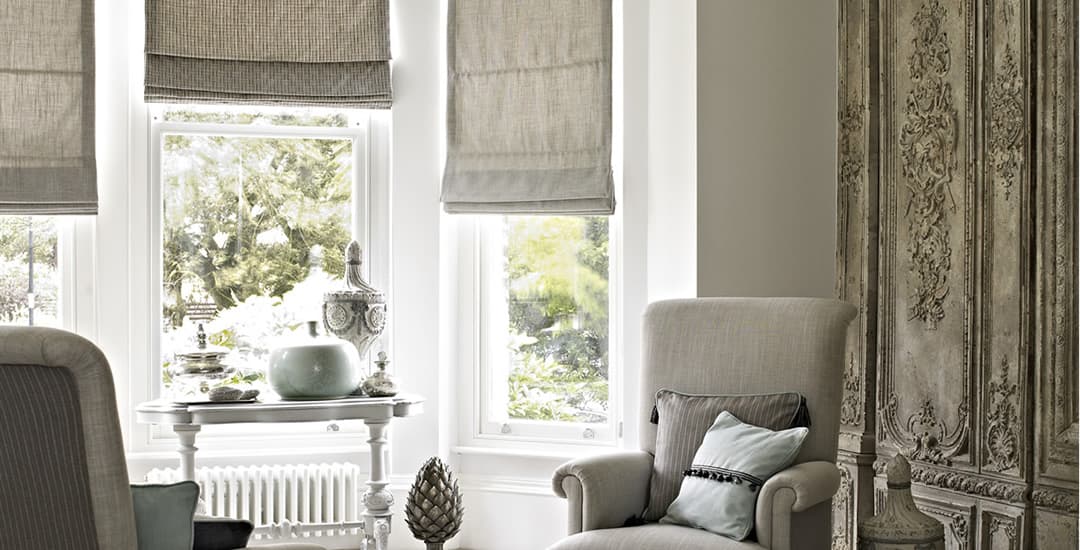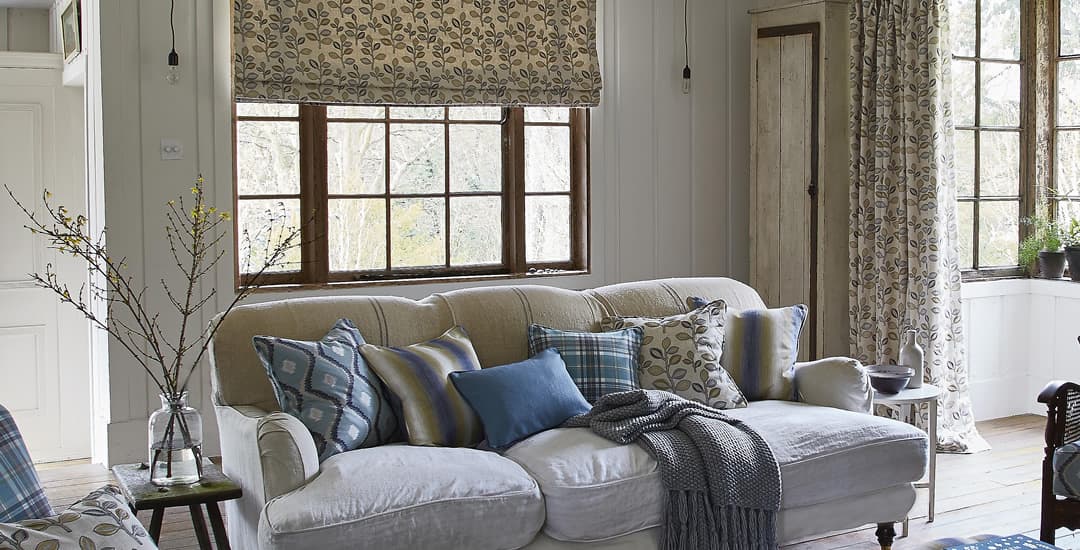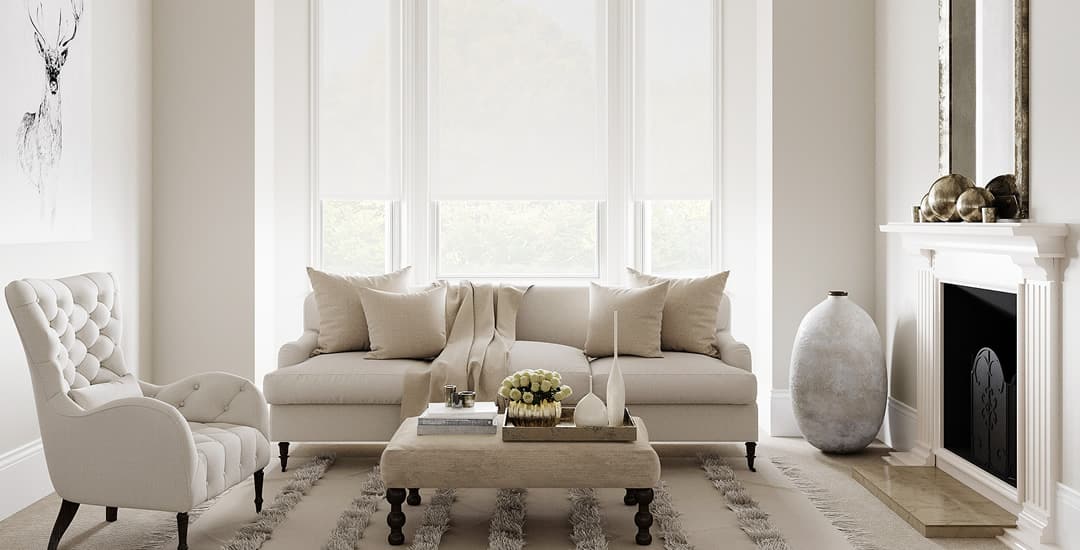
Roman blinds are the ultimate drawing room blinds, although other options are also available! In this blog post I will tell you what blinds are best for the drawing room and why, as well as giving a definitive explanation of what a drawing room actually is, because understandably, not all of us have multiple reception rooms to worry about when it comes to window treatments!
What is a drawing room anyway?

Let’s get this out of the way first then; what is a drawing room? Most UK folk have obviously heard of the term, albeit it isn’t necessarily known or used everywhere else in the world. Our Romanian lad caused peals of laughter by assuming that a drawing room is the workplace of an artist, and whilst I’m not going to pretend I didn’t laugh too, the logic involved in his conjecture is far from unreasonable.
Anyway. A drawing room is a reception room or “downstairs room” that shares many traits with the living room; the distinction being that the drawing room is designed specifically for entertaining guests, in contrast to a living room, which may be reserved for family only.
As such, a drawing room will usually be a little more formal or grand than your everyday living room that is designed firstly for your comfort rather than appearance; because keeping up with the Joneses and impressing them with your décor has apparently been a thing since at least the 16th century, when drawing rooms first became a thing (or received a name).
In times of old (and/or modern times if your pad is a legitimate stately home) the drawing room would be where your dinner party moved on to after dinner for drinks and cigars whilst the maids cleaned up; the term “withdrawing room” pre-dating that of “drawing room.” Or it could be where your callers congregated with you in the afternoon to watch Loose Women, or the equivalent vaudeville show of the day.
Further back than this, the drawing room could have been a lounge or day room attached to a suite or apartment of rooms in your castle or manor, which your staying guests could use as their private living room for the duration of their visit. I’m assuming that this fell out of fashion due to that fact that a propensity to furnish one’s guests so handsomely with facilities probably led to a correlating propensity to receive visits from the in-laws than ran into weeks rather than days.
Pure supposition on my part, of course.
Today then, a drawing room is, for most people that have one, a second reception room that is probably used less commonly and less casually than the living room or lounge; perhaps the reception room one still uses for guests that they either want to impress, or simply to preserve the privacy and comfort of the family living room without being judged for pet hair on the sofa, or the presence of gossip magazines on the coffee table.
Some folk with a drawing room might use it for high days and holidays; perhaps for Christmas day dining if a dining table is present, or for cocktails prior to dinner and port after.
The main themes that have carried through from the early days of drawing room usage right until the present day, however, are that the drawing room is intended to be shown to or used to accommodate visitors, and that it will likely be grander (even if only because it is less used) than your main living room.
What blinds are best for the drawing room?

Roman blinds. For drawing rooms, Roman blinds fulfil both the letter and the spirit of what’s called for. Drawing rooms are almost universally either somewhat formal or grand, and may run the full gamut right through to being sumptuous and opulent. These are the callsigns that the roman blind responds to; a more luxurious, prestigious, elegant blind does not exist.
Roman blinds come in many different colour and pattern or design variations and are very visually impressive, requiring hand finishing and sometimes, intricate detailing. They’re made with a high degree of attention to detail and are quite time consuming to create, as well as being made from premium fabrics.
Roman blinds are also a traditional blinds style, and whilst modern themes and patterns mean they’re versatile enough to suit any design ethos or personal preference, they lend themselves particularly well to grand or formal rooms like the drawing room. Roman blinds are also excellent insulators, which may be important if your drawing room is large and so, costly to heat, or if you often leave it unheated entirely when not in use.
What blinds are best for the drawing room if I don’t want Roman blinds?

Roller blinds perhaps, or wooden blinds; ultimately, there are no types of blinds that are functionally unsuitable for a drawing room. However, style-wise, some blinds immediately self-exclude, such as (in my opinion) the vertical blind and the Venetian blind, both of which are rather modern and also somewhat utilitarian.
You could definitely make a case for drawing room roller blinds in certain styles and patterns, and perhaps wood or faux-wood blinds would work in a more masculine or contemporary drawing room too.
But in my opinion, far and away the best blinds for drawing rooms are Roman blinds.




